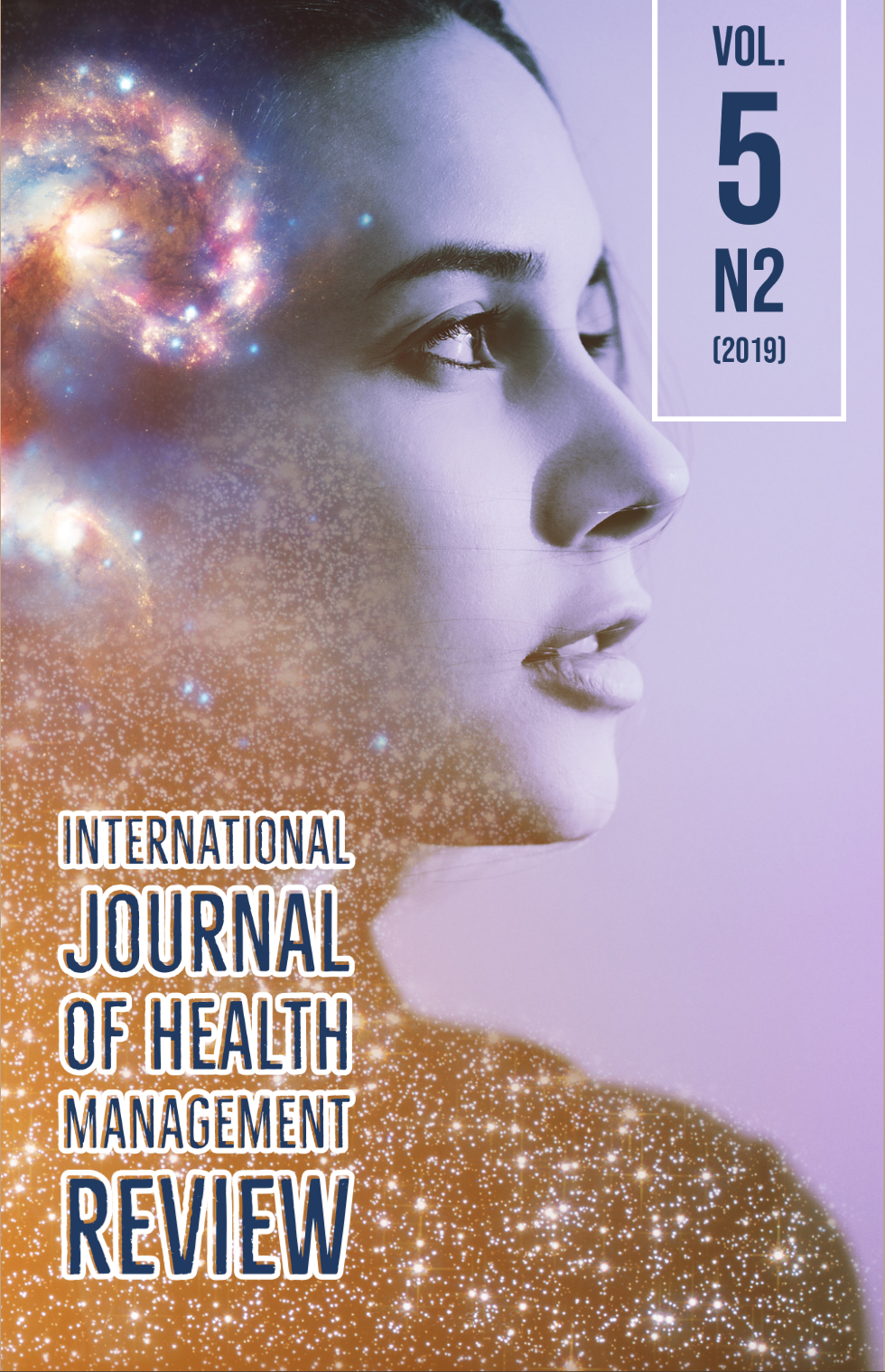A experiência estética musical de pacientes com diagnósticos e doenças potencialmente fatais
DOI:
https://doi.org/10.37497/ijhmreview.v5i2.163Palavras-chave:
Música, Cuidados Paliativos, EstéticaResumo
Diagnósticos de doenças potencialmente fatais são obstáculos que demandam uma quantidade vasta de abordagens para melhor tratar o paciente, e a intervenção musical pode ser uma ferramenta útil nesse processo. Pacientes que recebem a notícia dos seus diagnósticos vivem a experiência musical de formas variadas, seja com a intenção de manter suas identidades, suportar o tratamento, perseverar na sobrevivência e outras questões que surgem com a informação. Além disso, a maneira como interagem com a música é muito diversa, encontrando novas interpretações para composições já conhecidas ou mesmo abandonando suas histórias musicais e convergindo a gêneros completamente diferentes. Reconhecer os padrões e colocar em prática as intervenções que cabem a cada paciente pode ser uma ferramenta efetiva para as aflições por eles relatadas.
Referências
BAKER, F.; BOR, W. Can Music Preference Indicate Mental Health Status in Young People? Australasian Psychiatry, v. 16, n. 4, p. 284–288, 2008.
BRADT, J. et al. Music interventions for improving psychological and physical outcomes in cancer patients. Cochrane Database of Systematic Reviews, n. 8, p. CD006911, 2016.
BRO, M. L. et al. Kind of blue: A systematic review and meta-analysis of music interventions in cancer treatmentPsycho-Oncology, 2018.
CLARK, I. N.; BAKER, F. A.; TAYLOR, N. F. Older Adults’ Music Listening Preferences to Support Physical Activity Following Cardiac Rehabilitation. Journal of Music Therapy, v. 53, n. 4, p. 364–397, 2016.
GALLAGHER, L. M.; LAGMAN, R.; RYBICKI, L. Outcomes of Music Therapy Interventions on Symptom Management in Palliative Medicine Patients. American Journal of Hospice and Palliative Medicine, v. 35, n. 2, p. 250–257, 2018.
GILET, A.-L. Procédures d’induction d’humeurs en laboratoire : une revue critique. L’Encéphale, v. 34, n. 3, p. 233–239, 2008.
GRAMAGLIA, C. et al. Outcomes of music therapy interventions in cancer patients—A review of the literature. Critical Reviews in Oncology/Hematology, v. 138, p. 241–254, 2019.
GRANT, P. C. et al. Family Caregiver Perspectives on End-of-Life Dreams and Visions during Bereavement: A Mixed Methods Approach. Journal of Palliative Medicine, p. jpm.2019.0093, 2019.
GREENBERG, D. M. et al. Musical Preferences are Linked to Cognitive Styles. PLOS ONE, v. 10, n. 7, p. e0131151, 2015.
HOLE, J. et al. Music as an aid for postoperative recovery in adults: a systematic review and metaanalysis. The Lancet, v. 386, n. 10004, p. 1659–1671, 2015.
JANATA, P. Neural basis of music perception. In: Handbook of clinical neurology. Elsevier: v. 129, p. 187–205, 2015.
JUSLIN, P. N. From everyday emotions to aesthetic emotions: Towards a unified theory of musical emotions. Physics of Life Reviews, v. 10, n. 3, p. 235–266, 2013.
KOELSCH, S. Investigating Emotion with Music: Neuroscientific Approaches. Annals of the New York Academy of Sciences, v. 1060, n. 1, p. 412–418, 2005.
KOELSCH, S. Towards a neural basis of music-evoked emotions. Trends in Cognitive Sciences, v. 14, n. 3, p. 131–137, 2010.
LEVY, K. et al. End-of-Life Dreams and Visions and Posttraumatic Growth: A Comparison Study. Journal of Palliative Medicine, p. jpm.2019.0269, 2019.
NAVE, G. et al. Musical Preferences Predict Personality: Evidence From Active Listening and Facebook Likes. Psychological Science, v. 29, n. 7, p. 1145–1158, 2018.
NIEMINEN, S. et al. The development of aesthetic responses to music and their underlying neural and psychological mechanisms. Cortex, v. 47, n. 9, p. 1138–1146, 2011.
O’CALLAGHAN, C.; BARRY, P.; THOMPSON, K. Music’s relevance for adolescents and young adults with cancer: a constructivist research approach. Supportive Care in Cancer, v. 20, n. 4, p. 687–697, 2012.
O’CALLAGHAN, C. C. et al. "A quiet still voice that just touches": music’s relevance for adults living with life-threatening cancer diagnoses. Supportive care in cancer : official journal of the Multinational Association of Supportive Care in Cancer, v. 22, n. 4, p. 1037–47, 2014.
RENTFROW, P. J.; GOLDBERG, L. R.; LEVITIN, D. J. The structure of musical preferences: A five-factor model. Journal of Personality and Social Psychology, v. 100, n. 6, p. 1139–1157, 2011.
SANCHEZ, L. et al. Long-term treatment for emotional distress in women with breast cancer. European Journal of Oncology Nursing, v. 42, p. 126–133, 2019.
SOCIEDADE BRASILEIRA DE PSICOLOGIA., K. M.; COSTA JUNIOR, A. L.; ROLIM, G. S. Temas em psicologia. Sociedade Brasileira de Psicologia, 1993. v. 18
WALLMARK, Z.; DEBLIECK, C.; IACOBONI, M. Neurophysiological Effects of Trait Empathy in Music Listening. Frontiers in Behavioral Neuroscience, v. 12, p. 66, 2018.
ZHANG, J. M. et al. Music interventions for psychological and physical outcomes in cancer: a systematic review and meta-analysis. Supportive Care in Cancer, v. 20, n. 12, p. 3043-3053, 2012.
Downloads
Publicado
Como Citar
Edição
Seção
Licença
Autores que publicam nesta revista concordam com os seguintes termos:
O(s) autor(es) autoriza(m) a publicação do texto na da revista;
O(s) autor(es) garantem que a contribuição é original e inédita e que não está em processo de avaliação em outra(s) revista(s);
A revista não se responsabiliza pelas opiniões, idéias e conceitos emitidos nos textos, por serem de inteira responsabilidade de seu(s) autor(es);
É reservado aos editores o direito de proceder a ajustes textuais e de adequação às normas da publicação.
Autores mantém os direitos autorais e concedem à revista o direito de primeira publicação, com o trabalho simultaneamente licenciado sob a Licença Creative Commons Attribution que permite o compartilhamento do trabalho com reconhecimento da autoria e publicação inicial nesta revista.
Autores têm autorização para assumir contratos adicionais separadamente, para distribuição não-exclusiva da versão do trabalho publicada nesta revista (ex.: publicar em repositório institucional ou como capítulo de livro), com reconhecimento de autoria e publicação inicial nesta revista.
Autores têm permissão e são estimulados a publicar e distribuir seu trabalho online (ex.: em repositórios institucionais ou na sua página pessoal) a qualquer ponto antes ou durante o processo editorial, já que isso pode gerar alterações produtivas, bem como aumentar o impacto e a citação do trabalho publicado (Veja O Efeito do Acesso Livre) em http://opcit.eprints.org/oacitation-biblio.html















